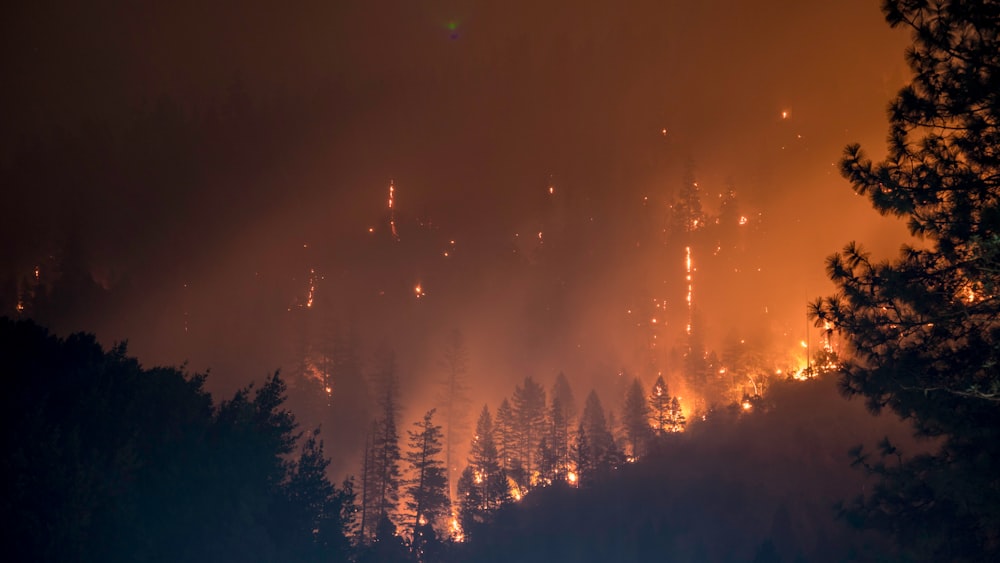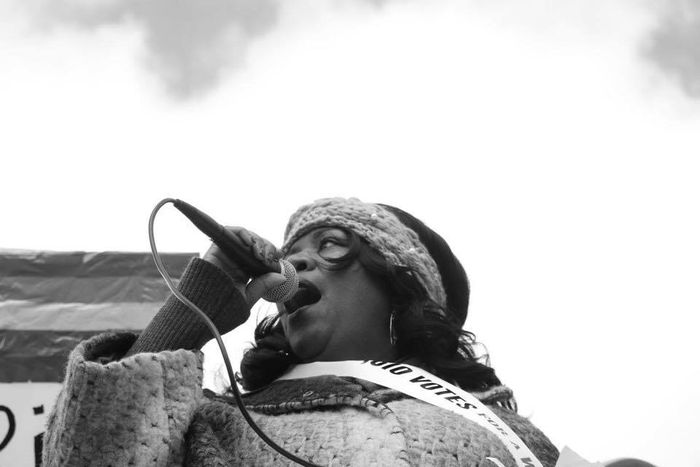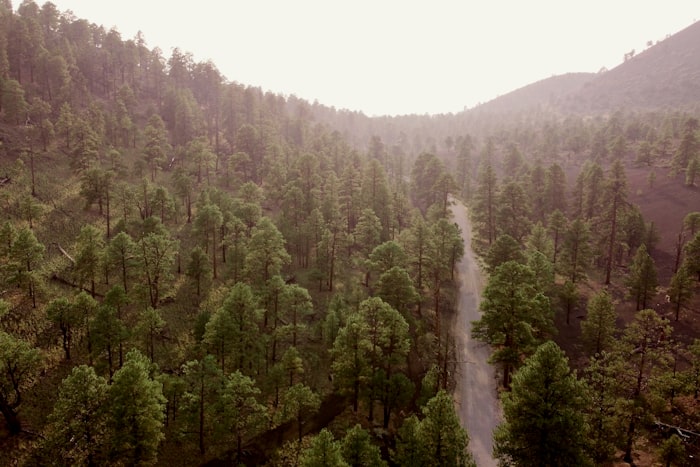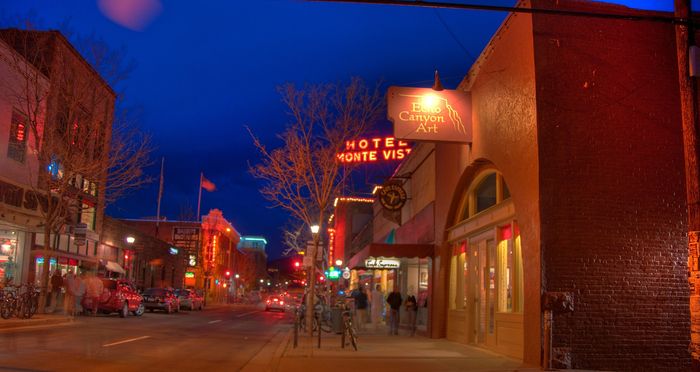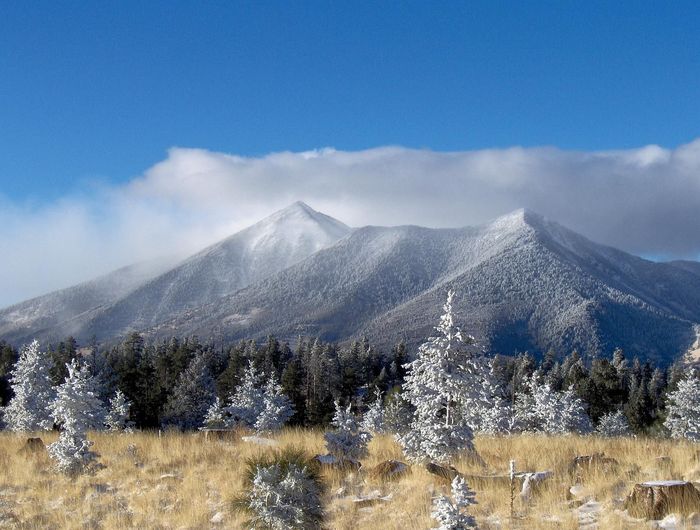Like most people who understand our climate crisis at all, I breathe a sigh of relief when the U.S. southwest monsoon arrives. “Phew! We’ll probably make it another year.” (Though until good rains have been underway for a couple weeks, all that’s really changed is that lightning, rather than careless campers, is likely now to be our undoing.)
By “make it,” I mean not be burned up wholesale in a megafire, like the one that destroyed Paradise, CA and left thousands homeless and others dead(1). Given the storm clouds of our gathering climate catastrophe, it’s only a matter of time before a somewhat larger mountain west city—like Flagstaff, AZ and its surrounding bedroom communities, including Kachina Village, where I live; or like Boulder, CO, threatened by a once-unthinkable winter fire in December 2021—burns down entirely.
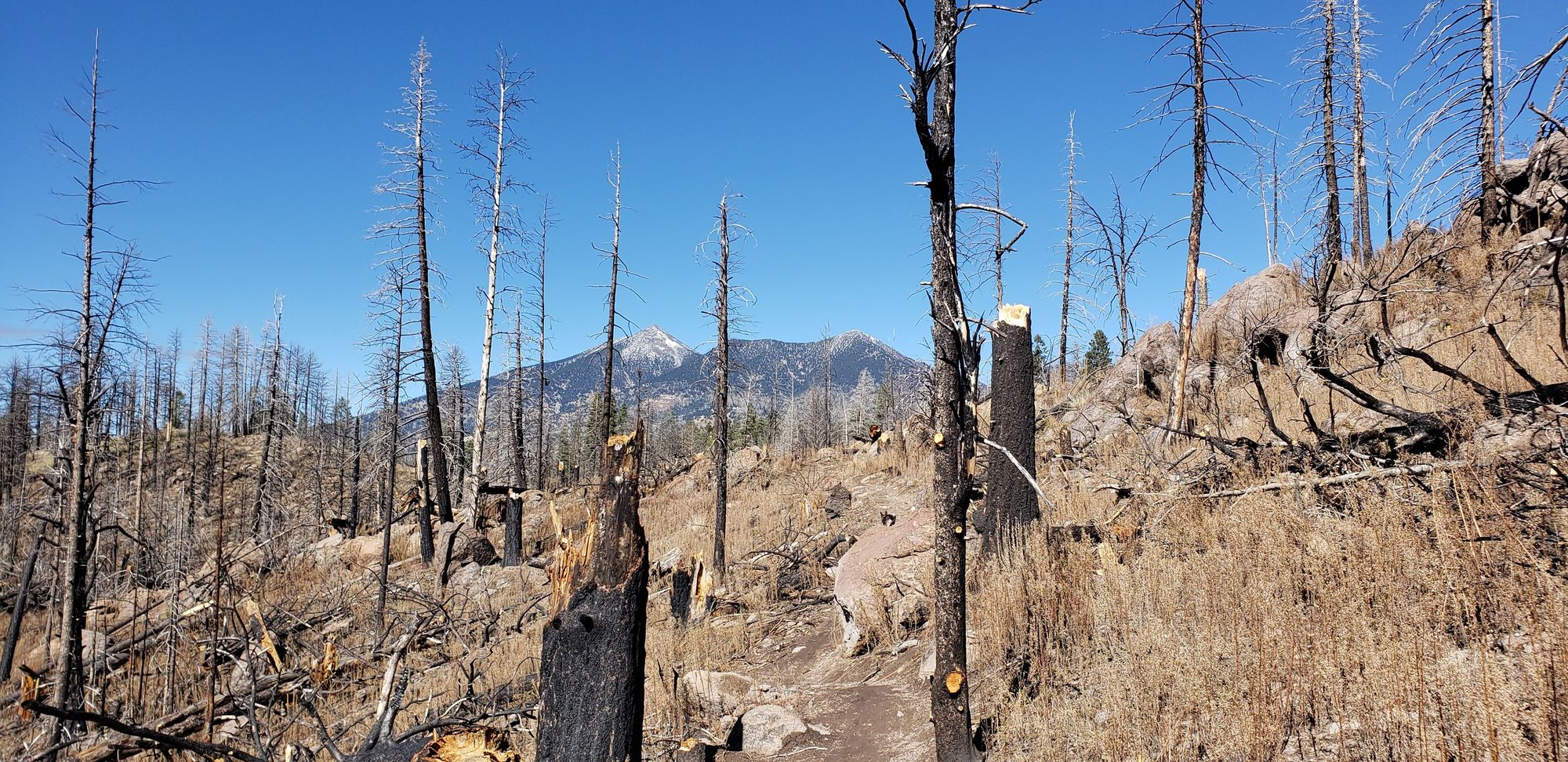
Once that happens, we’ll see a lot of action. That’s not hard to foresee. Cities will cut “moats” into surrounding forests, will clearcut wide swathes and dig trenches and salt the earth; national forest managers and states alike will stop insisting that forest thinning is only possible if somebody can make a profit off of it; there will be fights over making fire-wise yard design mandatory. Funds will be found to enforce fire bans, and no-camping ordinances will sprout overnight. Crazy as it might sound, wildfire is one of the more locally mitigable outcomes of climate catastrophe.
Unlike heat death at noon (when wet bulb temperatures exceed humanly survivable limits outside) or hurricanes that erase mile upon mile of coastline (as seas rise and weather systems roil with more total energy), fire is something you can hold at bay locally. For a time. Which is good, because wildfires are terrifying and we are on pace to do next-to-nothing at the scale necessary to avert many of global heating’s worst impacts.(2)
The mitigation-to-come will have its own, foreseeable but largely unforeseen knock-on effects: intensified regional nativism and dehumanization of unhoused people living in the forests, perhaps, or hastened local biodiversity collapse chains as anti-fire measures scale up before ecological impact studies can follow suit.
We’ll see a lot of bad outcomes no matter what, but still: there will be fire mitigation.
A person cannot live under intermittent threat of catastrophic fire without having some anxiety about it, though. And fire is a representative anecdote for our general situation of biospheric decay, not an exception to it. Here, during our current phase of widespread non-adaptation to climate change, whether the anxiety is felt directly, disavowed, or displaced as anger at scapegoats, in our Anthropocene that is also a Pyrocene—this age in which human reshaping of the planetary system becomes an age of megafires—it is part and parcel of a larger climate anxiety that increasingly shrouds all horizons.
Climate Anxiety
In recent years, the term “climate anxiety” has taken hold of popular consciousness and moved into specialist discourse. Rightly so. In an essay in Journal of Anxiety Disorders, however, Susan Clayton (2020) pushes back against the assumption that climate anxiety or eco-anxiety is maladaptive.
Noting that “it is important to avoid pathologizing the emotional response to climate change” Clayton cautions psychological professionals and laypeople alike to remember that “anxiety itself does not indicate a problem with mental health” but “can serve an adaptive function, as a future-oriented stance that can signal the approach of a threat and motivate people to prepare appropriately.”
If we are anxious about fire, well, we should be. Especially here in Northern Arizona (though fire’s “here” is increasingly everywhere, as blazes throughout a parched Europe’s burning 2021 and 2022 summers demonstrate).
In The Pyrocene: How We Created an Age of Fire, and What Happens Next, fire historian Stephen J. Pyne (2021) tells the story of fire’s co-emergence with life on earth and humanity’s essentially modern reshaping of earth as a fire planet (3). In our Pyrocene, “Humanity’s fire power spiked [and has not yet finished spiking] at exponential rates, but the living world in which we live suffered and threatened to become increasingly uninhabitable” (p.150). And yet fire has always been “an informing principle of terrestrial life and human culture” (p.143). Without fire, it is not only (frequently hellish) carbon capitalism that would not exist, but humanity as such.
Against the backdrop of fire as lifegiving, climate anxiety takes on a somewhat different hue. Anticipation of future threat, certainly, but also apprehension of a strange disjunct that is at once a point of terrifying and life-giving connection.
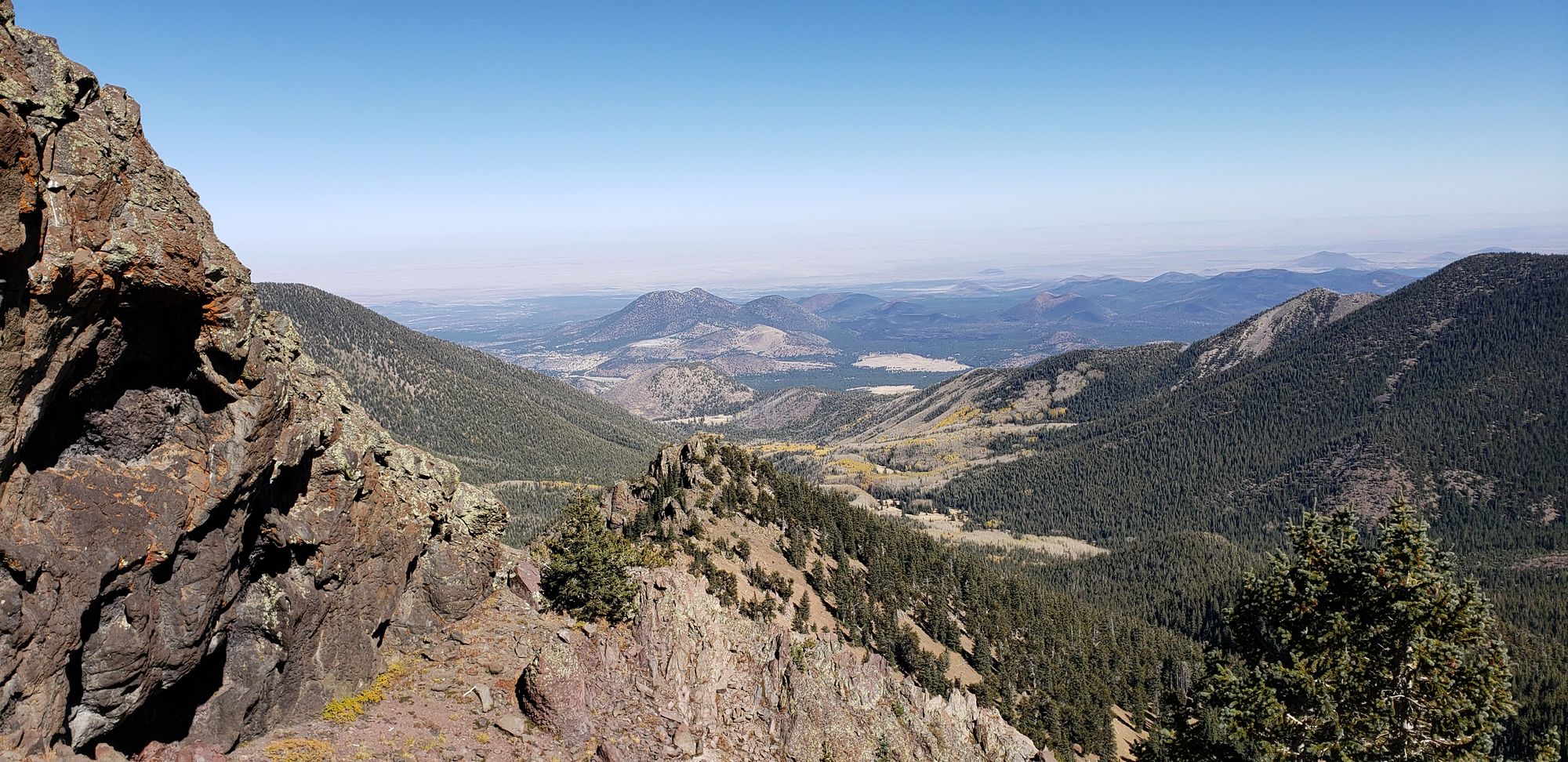
Fire’s source is of a different order than human and other forms of life, but fire itself depends wholly upon the living world that it consumes—and co-creates. Fire comes to us from elsewhere, but becomes itself only in the consumption of life; and we live thereby. As Pyne observes of earth’s most elemental source of fire, “The interaction between life and lightning is unequal. Lightning is a phenomenon of geophysics, not of life. Plants adapt to lightning, lightning does not adapt to plants” (p.10). By contrast, “Fire’s biological makeup is fundamental. It takes apart what photosynthesis puts together” (p.13). And not only that: fire “recycles and rejuvenates. It jolts out of biotic lethargy—a broad spectrum ecological catalyst. Our appreciation for how widely fire interacts with Earth’s biota seems limited only by our willingness to look” (p.20). Small wonder that for all but the most intensively urbanized, fire continues to be understood by most human cultures as both threatening and life-giving.
Lightning, fire’s origin, is simply other to human life. But fire is integrally entwined with life, human and otherwise—even as it, and our making of it in this era of catastrophic global heating, threatens the current planetary organization of life. Flagstaff very much included.
Fire is thus a perfect locus for the development of climate anxiety. Entwined with human life at every level, in the looming specter of megafires that threaten all living things for miles at a time, driven by gale-force winds and spawning fire-tornadoes that swirl destruction up to the heavens, it limns our possibilities of organized existence. Life and fire cannot be separated on planet Earth, but megafires on the horizon describe the limits of the contemporary human organization of life. They register not simply themselves, what they are, but also a site of impossibility that haunts us all—those in and out of fire zones alike.
Anxiety, l’angoisse, or Angst: From clinical disorder to existential condition, anxiety names a felt space of crushing impossibility at the edges of human existence. We know viscerally something of the impossibility of our being forever, and that knowing is a premonition—not just an apprehension of what has been, but a foregrasping of what is to be. We feel, in everything from quotidian details to the outer horizons of every sense of self, the limits of our being. And it feels terrible.
And yet, that feeling itself is central, integral like fire, to what it is like to be somebody. The question anxiety poses us is not how we are to be free of it, but rather what we are to do with it, what we are to do with ourselves.
Somewhere between the existentialist philosophers’ Angst and the American Psychological Association’s Diagnostic and Statistical Manual of Mental Disorders entry on anxiety, there sit the seminars of French psychoanalyst Jacques Lacan on l’angoisse. For Lacan, anxiety is the affect that overtakes us when something shows up for us, becomes apprehensible, in the place where only limits are.
We need the world to be a certain way, and we know it cannot quite be that way. But, still more, we feel those around us to need it to be that way even as we know that it is not, and we want very badly to make the world as our close others want it to be. But we cannot. (And they themselves need just the same with regard to their others and, so, are just like us at work on a world that must be some way and cannot be made that way.) And precisely there, where the world is not as we know our others need it to be and as it indeed cannot be, something appears to mark the impossibility that is at stake. Something appears concretely to us in the place of a limit that can only be abstract. We feel anxiety. In the Lacanian schema, anxiety sets out from “turmoil” (p.12). When we “become troubled as such, . . . as deeply troubled as one can be in the dimension of movement” (p.13), we are on our way to anxiety (though not yet all the way there). Approaching anxiety is approaching limits.
A little paradoxically, though, approaching limits—consciously, analytically—is approaching new organizations of self, new behaviors, new possibilities of being. Coming to terms with the affect of anxiety is central to a psychoanalytic read on what we are to do with ourselves.
The British Freudian Melanie Klein proclaims anxiety an ineluctable feature of human experience, present from infancy forward. For Klein, we feel both persecutory and depressive anxiety, “dangers felt to threaten the ego” that stem from a profoundly rooted “fear of annihilation” and “dangers felt to threaten the loved object, primarily through the subject’s [own] aggression” (p.78). Anxiety is an ambivalent anticipation of our own annihilation, a shimmering and intolerable sense of an ending at the heart of subjectivity. At the same time, it is an equally intolerable sense of ourselves as annihilators. We are not merely brought into being and ended by lightning. We bring fire wherever we go.
This year, an untimely April fire blowing hard down the northeastern slope of the Mt. Elden massif interrupted student presentations in the course I teach on argumentation. (April, when spring melt should be in full flush, when we might could should still be catching a foot or more of fresh snow.) Cell phones blared with emergency warnings that trumped their silencing.
I could see the fire was north, blowing northeast. Did anyone live near Doney Park? Nope, not in that class. No immediate danger. We spent a moment in quiet reflection. Presentations continued.
The floods would come later. The next big fire a few weeks later, with its own flooding to follow, would incinerate that swathe of the San Francisco Peaks I have known and loved best, the Weatherford Trail up to the heights and along the way reclusive Fremont Peak, with its thick mossy duff and long-fallen elders in the semi-permanent shadow of the northern aspect, its rocky crown on which I last collapsed, exhausted, the very week before all around it burned.
No Immediate Danger is the title of the first book of William T. Vollmann’s two-volume magnum opus, Carbon Ideologies. Vollmann writes to denizens of a hotter, darker future, trying—if not exactly to apologize or to excuse—at least to explain how it came to pass that, though knowing we were doing those future readers wrong, we made their world so badly. Summing up the state of responses to climate crisis in 2018, he writes, “As we contaminated our homes, warmed our atmosphere and acidified our seas, whatever would happen next stayed comfortably unthinkable, or at least potentially acceptable, back in the days when I was alive” (p.511). Notwithstanding very modest climate action by some of the globe’s biggest carbon emitters in the interim, such as the (intensely consumerist) provisions of U.S. Democrats’ “biggest climate bill ever,” the 2022 Inflation Reduction Act, Vollmann’s description remains apt (4).
As he dourly puts it, characterizing not only his own but much more the sum of human responses to our knowledge of how carbon emissions drive both global heating and the capitalist form of life, “Well, in the end I did nothing just the same, and the same went for most everyone I knew. This book may help you in the hot dark future to understand why” (p.13). Presentations continued.
Anxiety is sometimes described as “crippling” (5). The adjective is ableist, but captures well the sensation of incapacity that can accompany a felt encounter with limits. From the edges of being one takes the feeling of some profoundly limited mobility. One creeps through day-to-day life like one’s own shadow. One feels oneself constrained not entirely, but so profoundly as to be incapable of reasoned response, trapped in dull tropisms of habit robbed of meaning.
Alternately, anxiety can be a buzz of frenetic activity. It is the skin-crawling jitters of too much caffeine, but without quite wakefulness. One is captured by a rapid-fire non-sequenced sequence of brief and unfulfilling motions.
Perhaps most frequently, we apprehend not our anxiety but—if anything at all—that hollow space where we have numbed it out. People hold anxiety at bay with everything from chemicals to stories to a quietly militant sort of non-encountering of limits. If I do not reach out to know the world, then perhaps I will not have to feel the unbearable sensation of its ending, my ending, my part in its ending.
What anxiety is mostly not is slow thinking and feeling, a capacious bringing-into-mind of overlapping worlds and times. And it is not a coming-into-action together.
Scholars who study climate communication often think we have a problem of scale. Ordinary people, even climate scientists, just can’t comprehend the vast complexity of the earth system in its Anthropocene necrosis (6).
I’m inclined to think it’s as much a matter of time.
Time and Topophilia
Humans need, universally enough to overcome the inertia of capitalist necrosis, to find ourselves in the timescale of climate change. We have somehow to apprehend and participate in inventing differently a world that exceeds us almost infinitely and yet whose planetary futures and layered accumulation of pasts our species has permanently altered—this is the meaning of an Anthropocene—indeed, with extraordinary rapidity.
There’s a problem of apprehension.
In an extended gloss on his monumental Critique of Pure Reason, the Prolegomena to Any Future Metaphysics, Kant sketches the parameters of his philosophy. A central conceit is that the way things seem to us, we human experiencers, must align somehow with how things are in themselves (7). Most importantly, the world—being itself—must, however indeterminately so, be formally organized in terms of something like time and space.
Time and space, through which all human apperception occurs, constitute “the form of sensibility, antedating in my mind all the actual impressions through which I am affected by objects” (30, emphasis in original). The form of sensibility as such is a “pure intuition” (p.31) of space and time. We are able to be formed by space and time, in the flow of lived perceptual experience, precisely because these precede at any given point and time our actual experience of all points and all times. Space and time, for Kant, are pure intuitions that make the human experiencer (and, we might add, any experiencing animal) possible. They are in some way more real than the reality we each experience.
As a result, we are creatures of space and time, but we don’t really agree on what time and space themselves are. To the contrary, “sensuous perception represents things not at all as they are, but only the mode in which they affect our senses” (p.38). We apprehend each space, each time, as sheer appearances. No matter the extent to which time as such and space as such may be immutable formal realities back behind and enabling all perceiving, all sensory experience, the categories themselves remain formal, empty. We fill them in, tendentiously enough, with accumulations of experience.
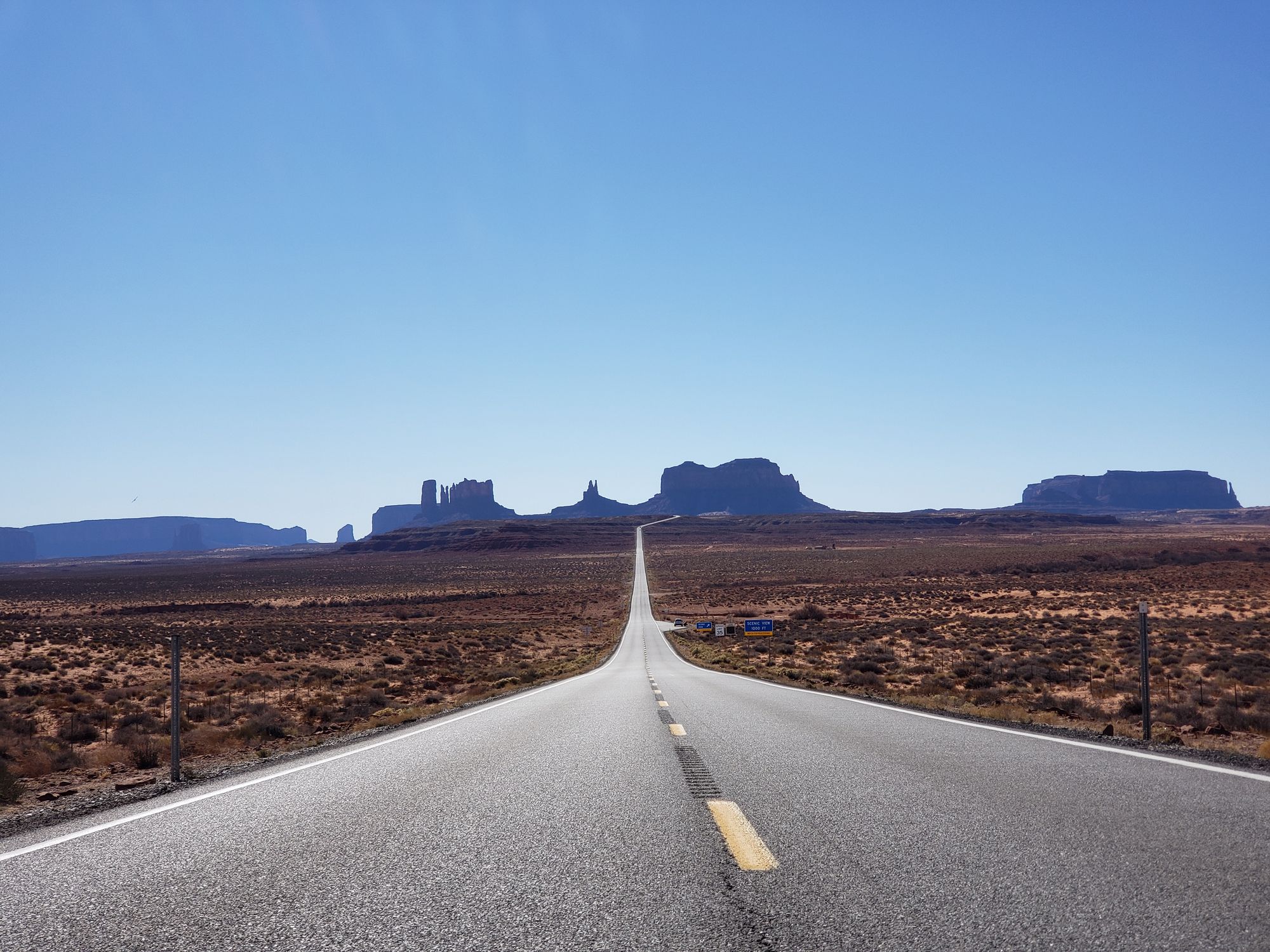
Driving across the rez from southwestern Colorado in late July, it can be sheer joy to see thick squirming stands of green where often are pinks, oranges, browns, and greys below the mesas—what always is variegated and intense, but hardly verdant, blushes green with possibility. The feeling of the good monsoon hangs inside you, explodes out. It is of the world, but it is of you, too. It is absolutely real; it transcends your subjective particularity, partakes of a splendor not only greater than your mind but more than human as well. To feel that joy is to know something of life that the jackrabbits and the coyotes and the mosquitoes all know, too. Still, it is your knowing, the knowing of your mind and the particular type of mind that you can be. You know the good monsoon by the splashes of green that hold the landscape in place differently. You know it because the pink-red soil does not blow in drifts across the white lines that hold the road in place.
In all this you’re knowing a place, sure. Delimited on a map and far more, as sovereignty, by story, patterns of use (even Roman law with all its sorrows, recognized usufruct, a right to the fruits of place)—delimited by people whose knowing (human and otherwise) exceeds your own and gets shared, transmitted, in motion across time. The road that leads you through the drylands hypostasizes one sort of trail, is crisscrossed by thousands of others. Where the green shock shoots up and where the soil accumulates: these mark untold millions of moments of intuiting the formal possibility of a world and moving experiencingly through its appearances. Living creatures, human and non alike, in motion across time.
Experiencing’s contours in action register the marks of time on a place. Every place that water channels responds thereby to prior instants of possibility and blockage. Where wind scours, no less.
The world is so many channels, accumulations of motion’s hindrance and enabling.
You drive across the rez and your sensory manifold includes many ways of being that bear a name—Diné—that overlaps with and is not another, Navajo. The name marks a particular human claim to belonging, and the traces of that claim extend in all directions, running deeper than their many effacements by and incorporations into the steel of road signs, the chopped dark earth of coal mines, the gridded lines of government housing. And here, too, are channels that go deeper still, extend beyond even the Diné Bahane‘ (the “story of the people”). Every creation transpires somewhere and when.
In apprehending a little of all that, as much as anything else, you’re knowing time, knowing a time and knowing in time.
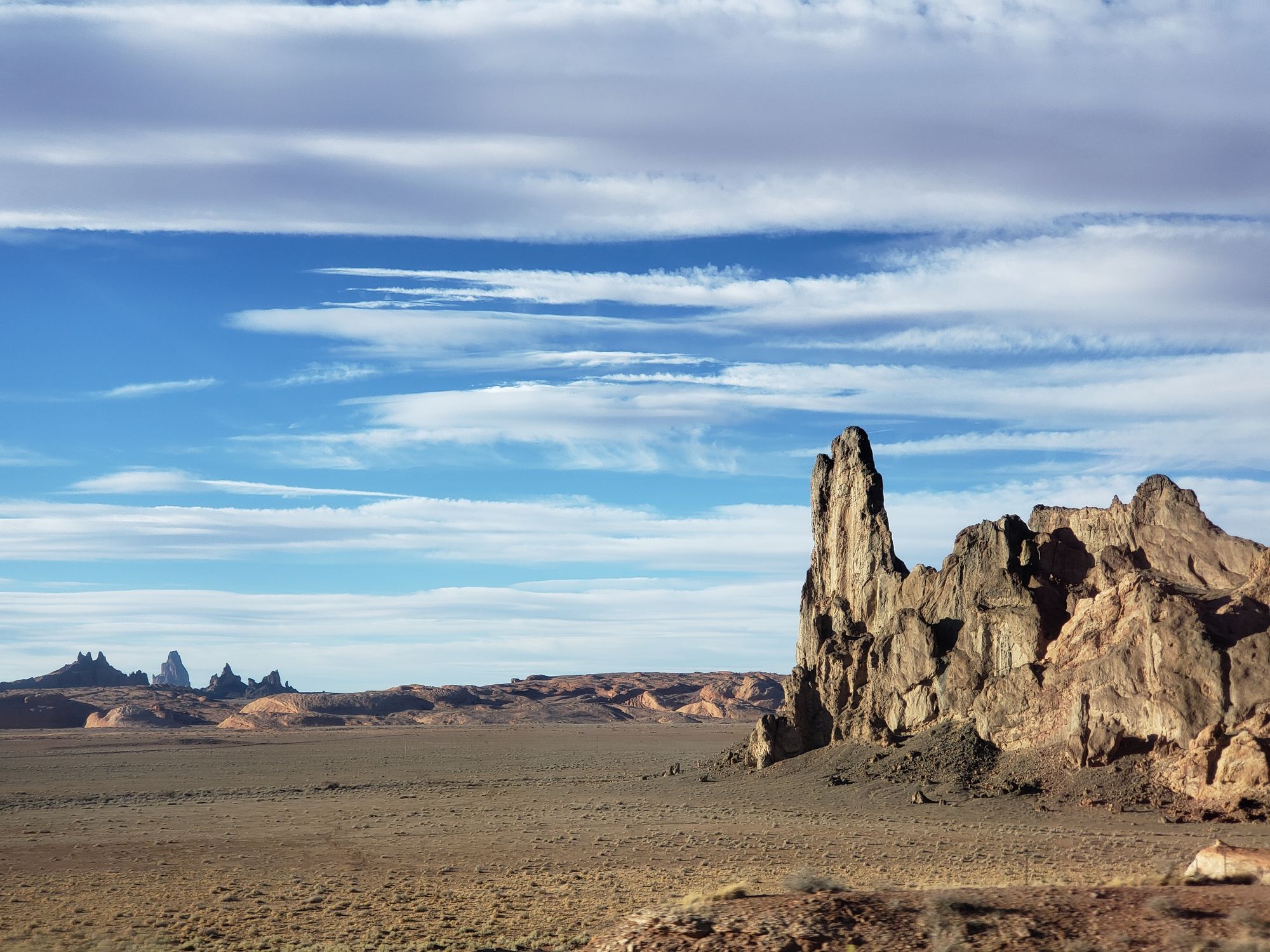
For Kant in the Critique of Pure Reason, time is “no empirical concept, to be drawn from experience somehow,” since “simultaneity [or being-together] or succession [or following-one-another] would themselves never come into perception were the presentation [or notion] of time not lying a priori at base” (p.94) (8). Time it is that precedes experience and allows for connection, for linking one thing to another in their sameness and their difference. It is “in time alone that all actuality of appearances is possible” (p.94). At stake is not merely that one space and another happen to be separate and connected in our perception, but that they can be at all, and thus that we perceive.
But time itself is hard to notice. And all too often, the meaning we make of time is in some sense too small.
This space—the rez, the way it leads to Flagstaff (in space, this time; in time, Flagstaff as often leads to a reservation; before Flagstaff the space was something else entirely, something bigger on nearly the same but so also wholly different red-pink-green-orange stretch of earth)—this space is available to an outsider’s apprehension along a narrow band of pavement for the time it takes to cross.
The time you see in it, though, exceeds your perceiving entirely. It was made before you arrived, will proceed after you cross back up into the mountains.
Topophilia, or love of place, has something to do with attunement to that other time, or to the timeliness of a place as such, a place’s actuality as itself across all the times that make it up, that make it cohere as somewhere in particular. To love a place is to apprehend something of time itself.
So when I say I love Flagstaff, I don’t really mean “the City of Flagstaff,” where I can’t afford a house and which, though pleasant, condenses no greater charms than many a town to which I am indifferent. Nor do I mean the metropolitan statistical area, comprising almost the whole of Coconino County—an area three times the size of Connecticut, nearly the size of Croatia. Who could love all that? I don’t mean human relations, either. Much love as I have for people, I’ve lived a lot of places and been fortunate to keep friends in heart and phone.
Loving a place means experiencing a connection in time that is in some way a disclosure of time, an apprehension of something more than or other to what simply is that place at any moment of its being. We apprehend something of the Wesen, the way of being, of the places that we love—and as with all loving, thereby also something of ourselves.
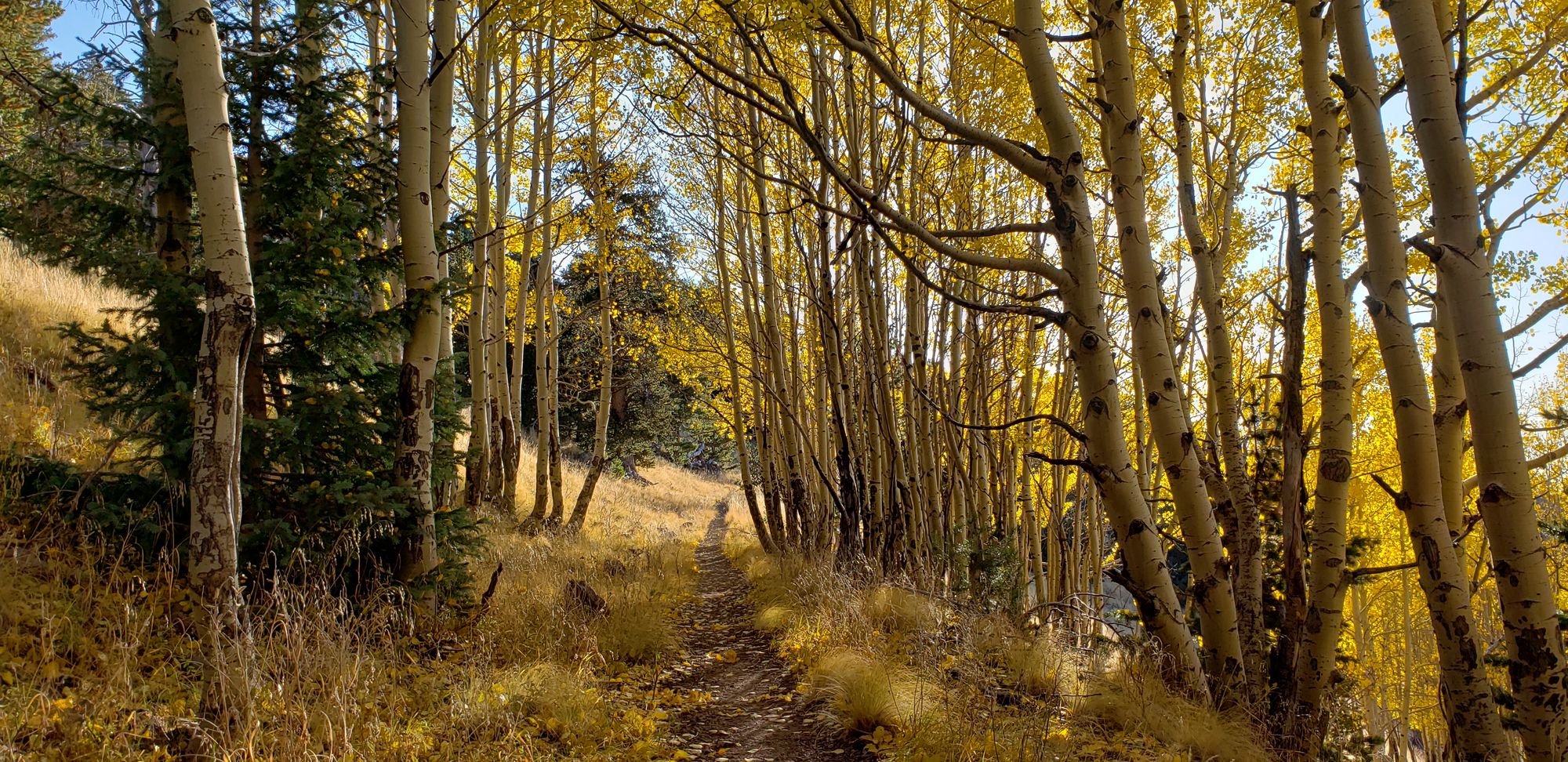
The Flagstaff I love is a collection of boulder-strewn peaks surrounded by crown-firing ponderosas and firs on all sides. It is bristlecone pines, three thousand years old, bearing witness to something frightening and new on the jagged volcanic slopes that once were not there in this space but have been for as long as it has been the place I love and long before the names Doko’o’sliid and Nuvatukaovi sprang up and then were cut down to become Doyle, Fremont, Agassiz, Humphreys, San Francisco. It is a vast forest, richly wafting caramel or butterscotch or vanilla from yellow-bellied elders, and it is thousands of sheep in mist between the trees no less than the trails we share between lichen-stamped boulders and stands of quaking aspen with elk, mule deer, black bear and cougar, the distant memory of grizzlies, ferns curling brown for fall, twisted upjutting roots catching water and draining it into limestone karsts down to the aquifer that replenishes us all and feeds the green valley below.
It is all of this on fire, all of it scorched with sorrow, all of them and their lives extinguished right down to the fungi below the soil. Not the swift-moving blaze that cracks open the hard ponderosa nut, but the megafire that swallows all this, and my house out in the country where we can afford it, and the pleasant people whether human or Abert squirrel, and the assholes who swerve in their cars at bicyclists, and the “carbon neutral by 2030” plan, and the university where I mostly talk with people who want to think and also with some people who don’t, and impossibly much more besides. Swallows it all in one leviathan gulp, encompasses and concludes this place, ends its time.
All these times and more, but because it is me loving this place now, it is—with crippling anxiety—this future of sweeping fire, and the floods that come after.
Witnessing and Love
This is not an essay about the conditions that drive megafire. The time to come will be hotter, darker overall, lit all too often by flames cresting horizons. The question is whether we can learn to love enough the topoi, the places that make up our world, in time to do something, anything, other than merely suffer the worst.
In one of the more important books about climate catastrophe, The End of Ice: Bearing Witness and Finding Meaning in the Path of Climate Disruption (9), Dahr Jamail urges attunement to the world around us as our best bet for negotiating global heating:
“The reporting in this book has turned out to be far more difficult to deal with than the years I spent reporting from war-torn Iraq. But I have come to realize that only by sharing an intimacy with these places can we begin to know, perhaps love, and certainly care for them. Only by having this intimacy with the natural world can we fully understand how dramatically our actions are impacting it.” (p.7)
It is not messaging or even militancy that most leads us to live differently (though there’s room enough for both in navigating the Pyrocene), but love, intimacy. Jamail’s witnessing to the death of aeons-old glaciers and the staggeringly biodiverse lifeworlds of rainforests and oceans alike is an effort to make the world more available to be loved, in its and our vulnerability, most especially for those whose feet barely touch the earth. We must come to love the world, the places where we are, each in their particularity—no less so the small pond surrounded by concrete than the rushing wild river. Every topos or place condenses and accumulates many, many times, but the time of intimacy is instantaneous. It is the time-out-of-time of “nobody owes me this” on any forest path, the time of a breeze that holds you like a song. Even when that breeze is a fire-wind.
This world is not made of concrete, not yet or mostly, but much of human life is lived divorced entirely from soil, sand, water that flows and heaves, the crinkle of dry pine needles rotting into thick loamy soil that once was wide branches, ragged edges of exposed limestone awaiting the snow-melt’s slow smoothing.
The time for loving the world is always now, always where one stands or sits or lies. The place to be loved is an accumulation of times, and its time, too, will end.
People often think of love in either pliant or fiercely solipsistic terms, as though what were at stake were simple surrender to another or else co-mutual seclusion from the world. But love, of a topos no less than of a demos or of a single person, is also the apprehension of time.
Particularistic, sure, but porously so. Open-hearted? Of course! But only when taken together, as Martin Luther King, Jr. urged, with a searching clarity that does not shy from painful truths. In the opening moments of Strength to Love, King urges a vision of love as combining “a tough mind and a tender heart” (p.14). Tough-mindedness, in King’s telling, is how we cope with our own fearful clinging to how a world has been. “Our minds are constantly being invaded by legions of half-truths, prejudices, and false facts” (p.14), and we free ourselves from the “almost morbid fear of the new” (p.15) that prevents grappling with the real tensions that shape our lives only through intellectual seriousness, analytic commitment that subjects our feelings themselves to “incisive thinking, realistic appraisal, and decisive judgment” (p.14). King’s love takes strength because it entails coming to terms with the painfulness of how the world is, how we are in and to the world.
For Melanie Klein, the end of a course of psychoanalysis—the “cure,” so to speak—is achieved when an analysand (a patient, a client) has re-experienced the anxieties of their earliest psychic development and made meaning of these. Containing and reducing anxieties, but not eliminating them, is here made the basis of psychological well-being. “Integration of the ego in depth” happens only when a “strong split between persecutory and ideal figures has diminished, if aggressive and libidinal impulses have come closer together and hatred has become mitigated by love” (p.80). Anxiety becomes less crippling as love tempers hatred and fear. We come to know ourselves as destroyer and destroyed alike, and in this to understand that we are like everyone else, even and especially those we love most. The psychoanalytic cure effects an integration of tough mind and tender heart, such that the two are no longer so far apart, and anxiety is reduced to bearable levels.
Well enough so for the individual patient, experiencing their individual distress, their inability to make a way in the world. But what of anxiety in a world where the cause can only grow worse, where we stand only at the beginning of the devastation our species has wrought against the places that we love (10), not its end?
Susan Clayton suggests that navigating eco-anxiety may, more than anything else, require coming to still better love the very world we continue to set on fire. She highlights “active engagement in addressing climate change” as in its own right a successful strategy for securing “positive effects on the mental health of those who are involved.” Indeed, for Clayton, this is so regardless of the success or failure of our efforts to halt climate catastrophe. Climate change “is a real problem” (emphasis in original), such that most of our work to address may—or more starkly, will—fail. But even a hotter, darker future is that much more habitable if we have tried in some ways to make space for love in it.
For Jamail, in a perhaps surprisingly similar vein, the point of witnessing is to “make amends to the Earth in the precious time we have left, however long that might be” (220). We owe it to ourselves and the places we love alike to see and hear and sense, truly see and hear and sense, our annihilating impact on them. And we might navigate the anxiety that this encounter with limits sparks in us through action, Clayton’s “involvement in climate change activism” that “could be described as a form not just of coping but of adaptation—adjusting to a new way of life” (11). And yet, we are unlikely to succeed in climate activism, at least where “success” is measured in protection of places and people we love and to whom we are obligated.
Jamail’s way of putting the point is as heartmaking as it is heartbreaking:
I go into my work wholeheartedly, knowing that it is unlikely to turn anything around. And when the tide does not turn, my heart breaks, over and over again . . . The grief for this planet does not get easier. Returning to this again and again is, I think, the greatest service I can offer in these times.” (p.220)
We love the world not because doing so will allow us to heal it or even ourselves, but because this is our only chance of truly living in it—even and especially in an all-too-human age of fire.
Topophilia or love of place in an Anthropocene is loss, distress, sorrow, unbearable limits. Yes, it is all that. But it is also still richness, the fullness of meaning and sensitivity and attunement to the particular pieces of world that accumulate so many times that even we dullards can sense it, places the loving of which alone might make human survival worthwhile, if anything can.
In loving place, we feel time.
Forgiving Ourselves As We Go
There may be no real resolution to climate anxiety. But we can learn to love with fire, and in so doing not merely to inhabit the world differently but to become quite otherwise to the species that we are and have been, the species that is burning it down. This means, in practice, collaborative action on the boundaries of the possible—including the development of an honest love for ourselves, even those of us caught upon and contributing to a desperate carbon capitalism’s pyres of consumption.
But how are we to love ourselves, we annihilators still? An Anthropocene is after all something planetarily novel (not merely fire and flood, but the devastation of nearly all “wild” life on the planet, the synthesis of novel chemicals that reconfigure the bonds of every living thing, the blotting out of the sun itself). We are hastening the end of a world we love, and in truly new ways.
We must learn, as MLK had it, that for love in action “sincerity and conscientiousness in themselves are not enough” (p.46). Love in action (and love only is love in action) includes loving even one’s foes. If we are to be true to a world that exceeds us, to come to terms with persecutory and depressive anxieties alike, it will take more than simply hiding out in some space of nominal moral decency. At stake is a way of being-together with one another and with the places we love that opens us onto new possibility and the searing pain of our present impossibilities, because these go hand in hand. King’s call was for us “to rise above the stagnation of closedmindedness and that paralysis of gullibility” (p.47), that we might come both to effective mass action and to love not only those we already love, but our enemies as well.
And here, in this burning Anthropocene where we face the threat of annihilation and the destructive consequences of our own consuming desires, it is we humans of Global North societies most of all who are our own enemies.
How are we to love ourselves and the world we are destroying, to remain present to anxiety and so capable of collective action in the face of our own destructiveness? King offers three answers:
“First, we must develop and maintain the capacity to forgive” (p.50). If we cannot forgive our own selves the “evil and injury” we inflict upon a beloved world, such that “the evil act no longer remains as a barrier to the relationship” (p.50), we cannot maintain an open and an honest mind long enough to reckon with the damage we do. We will remain trapped in anxiety’s tropisms, fluttering madly at the ceilings of our own minds as we refuse not merely to countenance but to know at all the damage we continue doing to the places we love.
“Second, we must recognize that the evil deed of the enemy-neighbor, the thing that hurts, never quite expresses all that he is” (p.51). We are more than our destruction of these places that we love, more than the consuming fire we bring and that we live from. We are that, too—let us not lose a hard-won tough-mindedness—but we are not only that. If we are not only that, and we have seen that indeed we are that, it remains yet to be discovered or invented just what, ultimately, we may yet be. An anthropocene, surely, but of what anthropos?
“Third, we must not seek to defeat or humiliate the enemy but to win his friendship and understanding” (p.51). A chastened humanism (12), to take an old gag from the comic Pogo, recognizes that we have met the enemy—and they are us. We must come to love and forgive ourselves in the inadequacy of our actions and, tough-mindedly refusing the siren call of mere self-abnegation, to act on the world all the same.
When people first fight through the fog of anxiety and a stultifying cultural commitment to denial of how astoundingly badly our climate crisis is unfolding, there is some temptation to fall into generalized misanthropy. “Look at us, we humans, who have destroyed what we love! Look at us ye mighty and weep, for here is eternalized the anthropic principle! Decay, ruin, catabolic consumption! From dust and a thin spark born, but we set the whole world to burning in our wake.”
Leaving aside the undue generalization (most of the globe’s population has had little enough hand in, or benefit from, the extraordinary resource metabolization of carbon capitalism’s last hundred years or so), it’s a stance that leaves little space for love.
If we are to love our places enough to become otherwise for and in identificatory relation with them, we have to learn to love ourselves as their enemies. Yes, we are become destroyer of worlds. Yes, our anxiety correctly names our likely ends in fires of our own making, our culpability for the annihilation of the topoi that we love. Yes, and yes, and.
To love the places that make us is to come, along the way, to love ourselves as we are. Not because we are not all that bad—it isn’t true; we are—but because we are not only that. We are also of and from and for these places. And so topophilia is also a beginning of becoming other to ourselves, coming to be the subjects of a longer timescale, a different temporality: one in which we can perhaps be forgiven, and at the same time one that clarifies the desperate urgency of immediate action.
If we are to do anything in a hotter, darker future but suffer through the very worst, we have to come to terms with climate anxiety in both resolute action and something like self-forgiveness on behalf of the places we love and are torching. If we would love our world deeply enough to save what we love about it, we will have to learn to love ourselves along the way.
Let there be time yet.
Notes
1.Meanwhile, neighbors living below the burn scars of glassified soil on steep hillsides shudder in anticipation at the floods to come, even as they welcome a break in the fire threat.
2.Studies and reportage on how much “faster than expected” our climate catastrophe is proceeding outpace every summary, but several recent studies are captured well by the Guardian’s editorial desk: “The Guardian View on the Climate Crisis: No End in Sight” (28 October 2022). The calls for climate reparations with which the guaranteed-to-fail COP 27 began and the thin promise of a catastrophe adaptation fund for the global South with which it concluded highlight the urgency of the crisis, the desperation of its first victims, and the completeness of a refusal by the wealthy nations to reorder the world to avert worst outcomes,
3.Pyne developed his concept of a Pyrocene in part through conversation with Flagstaff-based fire management specialist P.J. Lingley, NWCG/FEMA Incident Commander Type 3.
4. Just how apt is highlighted in a 20 September 2022 oration by UN Secretary-General Antonio Guterres: “We need action across the board. Let’s have no illusions. We are in rough seas. A winter of global discontent is on the horizon. A cost-of-living crisis is raging. Trust is crumbling. Inequalities are exploding. Our planet is burning. People are hurting—with the most vulnerable suffering most. The United Nations Charter and the ideals it represents are in jeopardy. We have a duty to act. And yet we are gridlocked in colossal global dysfunction. . . . The climate crisis is the defining issue of our time. It must be the first priority of every Government and multilateral organization. And yet climate action is being put on the back burner.”
5. As it happens, I was myself in adulthood “crippled”—rendered numb below the chest, with a substantially shattered spine and two busted lungs—by a snowboarding accident, and had the rare good fortune of relearning to walk and even run and ride again in subsequent years, much of that aided by my four-legged companion Zada and by the San Francisco Peaks where we essayed new steps together. I know from loss of mobility.
6. As Michael Richardson (2020) writes of the staggeringly vast Australian bushfires of 2019-20, “The fires were intensely affecting and yet impossible to grasp—and perhaps even more intense precisely because their scale so challenged the imagination” (339).
7. It’s a bit more complicated than that. But readers of this essay may find themselves less engaged by Kant’s organizing question, “Is metaphysics possible?” and his answer, “Yes, via synthetic a priori propositions whose validity is grounded in the character of being that is formally necessary to and thus enabling of all human sensibility.” It’s worth noting, too, that Kant doesn’t have to be right about metaphysics for his flow of thought to have a certain heuristic value.
8. Translations of the Critique mine. Time, for modern physics, is even less straightforward than Kant supposed. As my partner Laura Noll, a trauma psychologist and neuroscientist, is fond of saying, “Time moves forward and backward.” With Kant, I mean time as it makes all appearance possible, supposing space held pointillistically in mind. When space, held close to your heart, stands still it is time’s motion alone that defines a place, and to the tune of time’s ravages and uplifts that love occurs.
9. While some of the climate studies underlying it have been superseded by newer results—which will, in turn, themselves be superseded; such is the nature of a rapidly evolving science and a rapidly accelerating crisis—The End of Ice offers a type of picture that is rare in contemporary discourse: clear-eyed about devastation and the capture of politics by a majority shareholder class that all but guarantees new and intensifying catastrophe and yet still open-hearted, ready to love the world that remains and help others to do so as well. It is no accident that Jamail turned from years of covering the U.S. devastation of Iraq and Afghanistan as a war reporter to bearing witness to climate collapse in the glacial world and elsewhere.
10. To say nothing of many other obligations—signal among them the way uneven distribution of climate change’s impacts has begun amounting, in practice, to genocide against global South populations.
11. What this best looks like is debatable, but that it must be solidaristic and not merely individualist is not.
12. I’ve written about chastened humanism in several forthcoming essays, but lay out the concept a bit in The Ethical Fantasy of Rhetorical Theory.
Works Cited
Allen, Ira. 2018. The Ethical Fantasy of Rhetorical Theory. Pittsburgh: University of Pittsburgh Press.
Clayton, Susan. 2020. “Climate Anxiety: Psychological Responses to Climate Change.” Journal of Anxiety Disorders 74. https://doi.org/10.1016/j.janxdis.2020.102263.
Guterres, Antonio. “‘Our World Is in Big Trouble,’ Secretary-General Tells General Assembly, Calling for Member States to Work as One United Nations.” United Nations Meetings Coverage and Press Releases, 20 September 2022. https://press.un.org/en/2022/sgsm21466.doc.htm.
Jamail, Dahr. 2019. The End of Ice: Bearing Witness and Finding Meaning in the Path of Climate Disruption. New York: The New Press.
Kant, Immanuel. 2003 [1787]. Kritik der reinen Vernunft. Stuttgart: Reclam.
Kant, Immanuel.1950 [1783]. Prolegomena to any Future Metaphysics. Trans. L.W. Beck. Indianapolis: The Library of Liberal Arts.
King, Jr., Martin Luther. 1981 [1963]. Strength to Love. Philadelphia: Fortress Press.
Klein, Melanie. 1950. “On the Criteria for the Termination of a Psycho-Analysis.” International Journal of Psychoanalysis 31: 78-80.
Lacan, Jacques. 2014 [2004]. Anxiety: The Seminar of Jacques Lacan, Book X. Ed. Jacques-Alain Miller. Trans. A.R. Price. Cambridge: Polity.
Pyne, Stephen J. 2021. The Pyrocene: How We Created an Age of Fire, and What Happens Next. Oakland: University of California Press.
Richardson, Michael. 2020. “Witnessing the Anthropocene: Affect and the Problem of Scale.” Parallax 26(3): 339-359.
Vollmann, William T. 2018. No Immediate Danger: Volume One of Carbon Ideologies. New York: Viking.
Photo by Matt Howard / Unsplash


